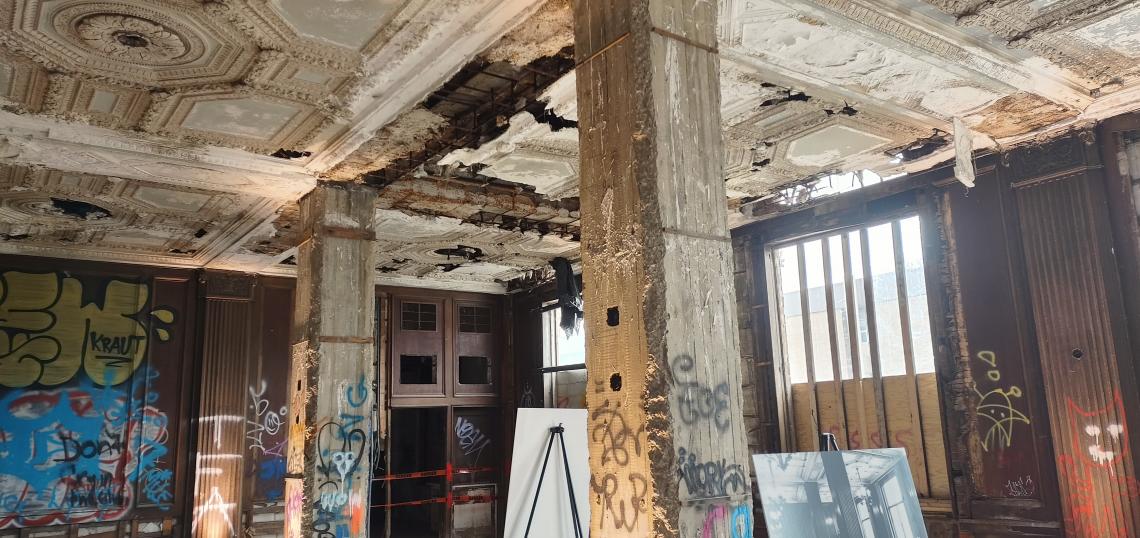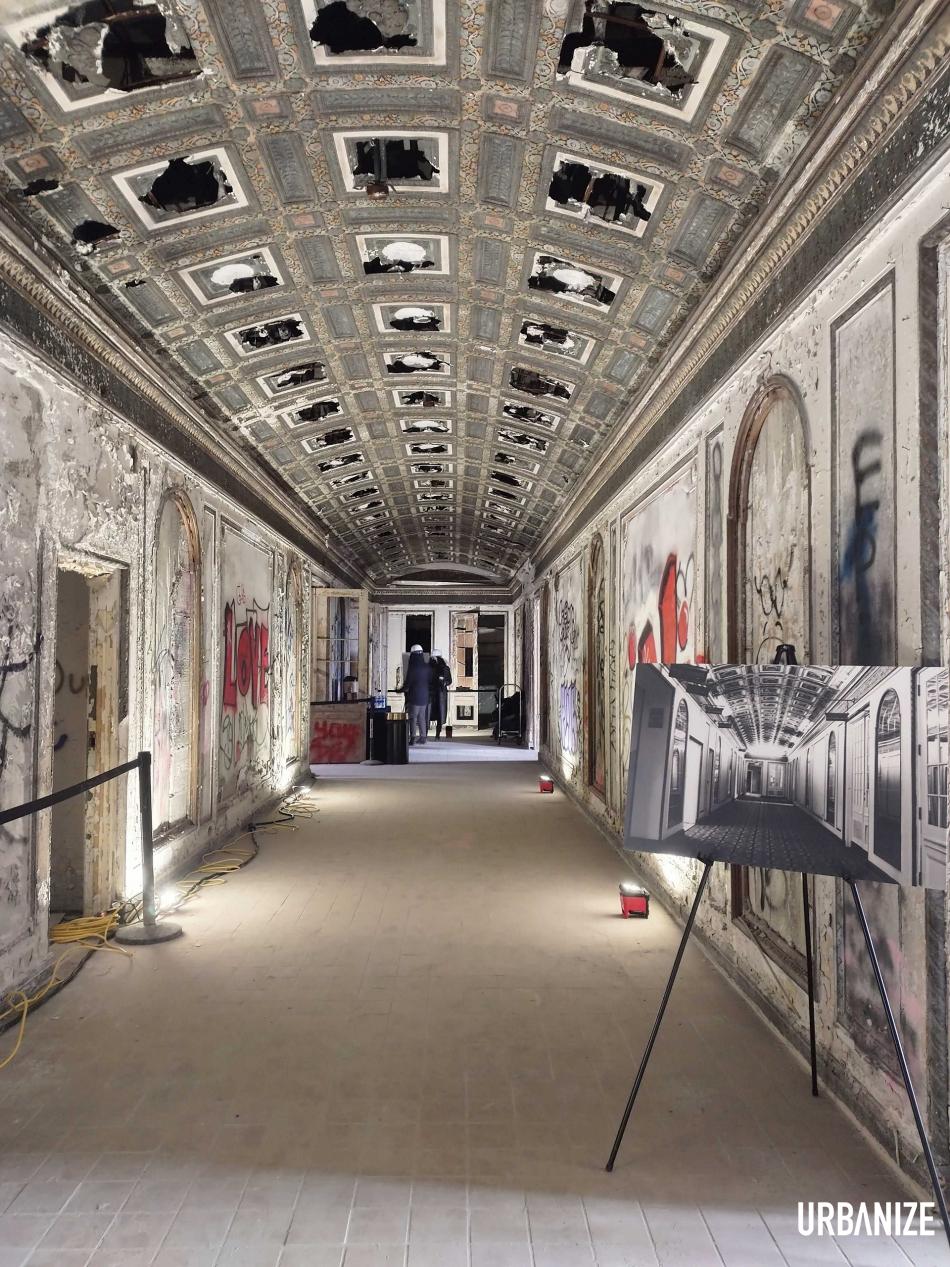It will take a lot of work, but Lee Plaza will be restored.
Officials announced details on the Lee Plaza restoration at the site, with a rare (legal) look inside for media (see more photos in the gallery above). The restoration is led by the Roxbury Group and Ethos Development, working together as Lee Plaza LLC. They're working with the architecture firm Fusco, Shaffer & Pappas, and the general contractor is the Christman Co. Kristine Kidorf is the historic consultant for the project.
The $59 million redevelopment will include 117 affordable housing apartments for low-income seniors at or below 50 percent Area Median Income, or $28,000. Seniors will pay no more than 30 percent of their income on rent. Work will start next year, with construction complete in 2024.
Expect the main floor common space and ballroom to be restored. While much has been scrapped over the years, some interior details remain. David DiRita of the Roxbury Group tells us that water has damaged much of the plaster, and most of it will have to be replicated instead of restored. Above the first floor, not much can be salvaged. But when visitors walk in after the restoration, the building should appear like the old photography.
The restoration will bring a much-needed boost to the area. It sits down the road from the Motown Museum, which is undergoing an expansion, and the Henry Ford Health Center and Brigitte Harris Cancer Pavilion.
The Roxbury Group also led the redevelopment of two downtown landmarks: the David Whitney Building and the Metropolitan Building. The Metropolitan Building was slated for demo and in terrible shape before the restoration. It's now home to the Element Detroit Hotel and the Monarch Club.
Lee Plaza was built in 1927 by real estate investor Ralph T. Lee, who wanted to emulate what he saw on New York's Fifth Avenue. It was designed by Charles Noble and featured ornamentation by Corrado Parducci. Lee Plaza opened as a residential hotel, but by the mid-30's faced bankruptcy. It changed hands through the years, and became a residence for low-income seniors before finally shuttering in the late 90's.








